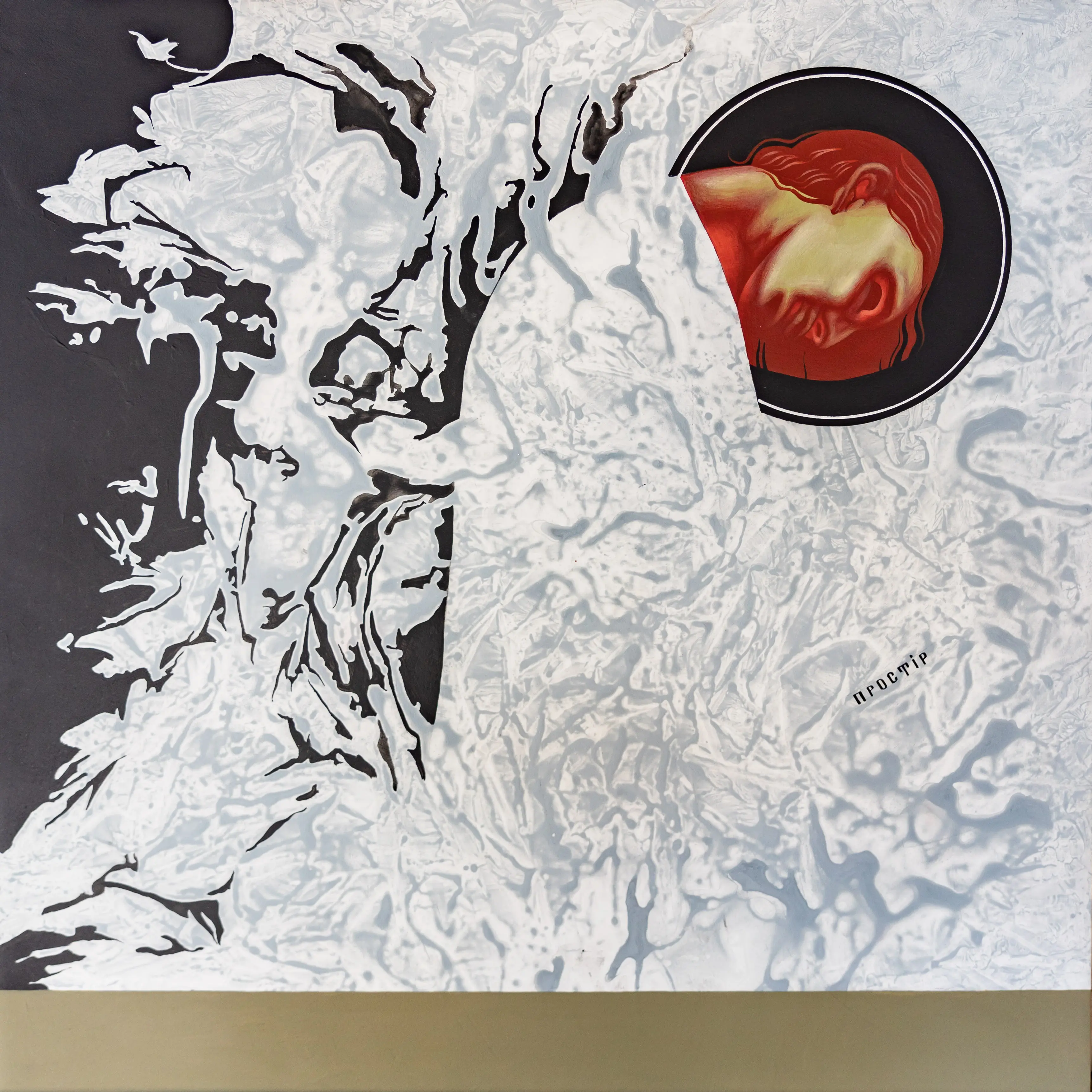Hlafira Shcherbak is 27 years old, she grew up on the Crimean peninsula. When this was annexed by Russia in 2014, she and her family fled to Lviv in western Ukraine. There, Hlafira Shcherbak graduated from the Academy of Arts with a focus on Sacred Art. The young woman had already participated in the painting of church frescoes and worked in the art workshop of the Greek Catholic Cathedral in Lviv. But then, Russia's war of aggression changed her life, as it did for many Ukrainians. Her fiancé was killed in the fighting around the steel work in Mariupol. "After this experience, at first I couldn't do artistic work at all. I was paralyzed", says Hlafira Shcherbak, fighting back her tears. Step by step, she sought stability in her life again – and art helped her to slowly have this stability return to her days.
Hlafira Shcherbak joined "Icon Art," a collective of artists in Ukraine who explore contemporary sacred art, reinterpreting the long and rich tradition of historical art forms in the context of modern culture. In Lviv, there is an "Icon Art" gallery. In one project, icons were created to deal with the war and its aftermath. Icons are cult and holy images venerated mainly in the Eastern churches, especially in the Orthodox churches of the Byzantine rite. However, the icons that can now be seen as part of the exhibition in Eichstätt do not correspond to the usual image. War, death and hunger are visualized here alongside depictions of saints. Hlafira Shcherbak points to one of her works that shows four faces. They are painted on a map. "When my father got leave from military service for a few days, he brought this map back. It shows the course of the frontline where he was deployed." Another icon features St. Nicholas. He does not wear a golden or red robe, as known from other representations. The dress in camouflage colors rather resembles a soldier's uniform – a gloomy representation. And yet, the artwork wants to send a positive message, as the artist emphasizes: "St. Nicholas is a saint with whom we all associate hope. This expectation of a miracle, we have that in Ukraine, too."
The exhibition aims to illustrate the experience of war through the eyes of artists, explains the vice-rector of the Collegium Orientale, Markian-Illia Mykytchyn. He contacted the "Icon Art” movement and organized the exhibition. "It was not easy to bring the icons from Ukraine to Germany." For two months, the 50 icons will be on display in the premises of the Collegium Orientale. All paintings are available for purchase – proceeds benefit the artists.
The exhibition can be visited daily from 2 to 6 p.m. from June 10 to July 31 at the Collegium Orientale, Leonrodplatz 3.
![[Translate to Englisch:] Ikonen](/fileadmin/_processed_/f/5/csm_IKONEN_Klenk2023-6321_6622965128.webp)


